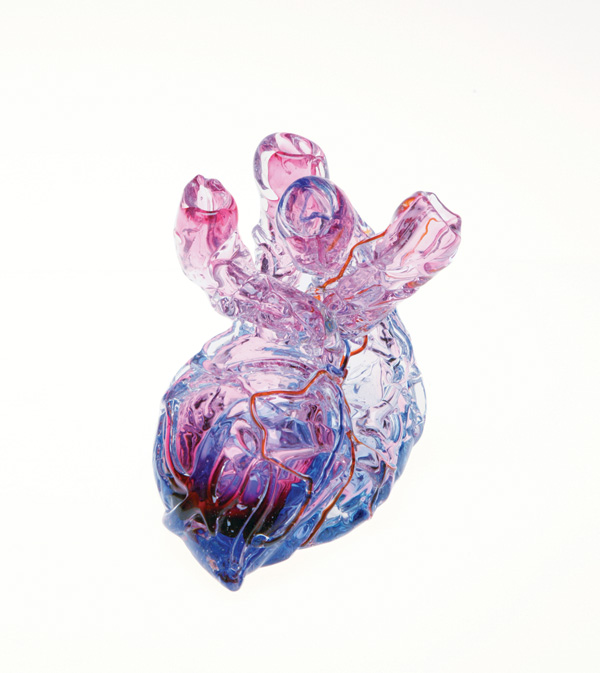Donald Carlson
In glass-blowing, red is the most difficult color to make. If the glass gets too hot as the color is added, it can turn brownish-yellow. Red, however, is the color at which glass artist Donald Carlson excels. “Most of the colors, you can make easily, but with red, there are a million variables such as time, temperature and how you work the glass,” says the 62-year-old. “I’ve devoted my whole career to making simple, elegant shapes in red.”



 Water drops. Tree roots. Antlers. Soap bubbles. Everything from organisms to human organs serves as inspirations for glass artists Andi Kovel and Justin Parker, the partners behind the Portland-based esque studio. “Esque is a suffix—as in picturesque or burlesque,” says Kovel. “We wanted a studio name that acknowledges that everything that surrounds us influences us.”
Water drops. Tree roots. Antlers. Soap bubbles. Everything from organisms to human organs serves as inspirations for glass artists Andi Kovel and Justin Parker, the partners behind the Portland-based esque studio. “Esque is a suffix—as in picturesque or burlesque,” says Kovel. “We wanted a studio name that acknowledges that everything that surrounds us influences us.”